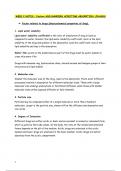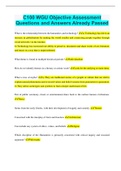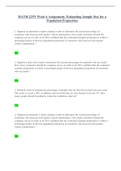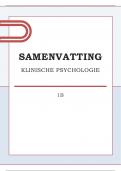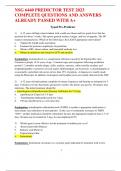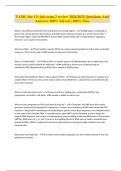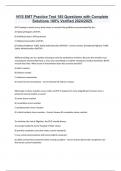Summary
Summary Aulton's Pharmaceutics the design and manufacture of med - Biopharmaceutics (PHA426)
- Course
- Institution
- Book
This document includes detailed information about the factors affecting drug absorption and barriers of drug absorption in the GI tract. It includes factors like GIT diseases, transporters across the membrane, the presence of food in GIT, the physicochemical properties of a drug , dosage forms...
[Show more]
